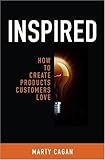 You know who Sid Meier is, right?
You know who Sid Meier is, right?
Sure you do. He’s the creator of the infamous Civilization series, the turn-based strategy games that pit you against the computer and other players for utter world domination. It’s history class on crack cocaine.
As the Director of Creative Development at Firaxis Games, we have Meier to thank for our addictions.
How did he architect such engrossing worlds? By understanding player psychology.
Gameplay is really a psychological experience, and that this fact can make the game design process easier sometimes, but it can also make it more difficult for those in development too. [Meier] outlined several major “disorders” that players deal with: egomania, paranoia, delusion, and self-destructive behavior.
Ultimately, if the designer can make games that address these psychological issues, the player will feel much better, and the game most likely will be a much greater success as a result.
Egomania, paranoia, delusion, and self-destructive behavior, eh? Methinks the way Meier dealt with these disorders can also be borrowed into the business world. Let’s see how they translate, one at a time.
Egomania
First and foremost, the designer must recognize that the player is an egomaniac. The game is all about the player, not the designer.
The products you create are all about your customers, not you. They don’t care if you’re a nice person, spent all of your savings on these products, and help little old ladies across the street. If your products don’t solve their problems, or make them feel great about themselves, then they won’t purchase your products. Fashion designers know this. Charles Revson, co-founder of Revlon (REV), knew this very well when he said, “In our factory we make cosmetics. In the drugstore we sell hope.” Your business, and your products, need to be all about them, the customers.
Paranoia
Paranoia in the player is also something that the designer must be careful to avoid. Meier said that randomness in a game can trigger paranoia quickly because the player wants/needs to be in control of the experience.
Quality consistency is key. Customers aren’t going to stand for uneven and unpredictable solutions. What good is a product that turns left when the customer steered right? Who wants to buy wine from a vineyard where some bottles are a little too dry and others a little too sweet? Once a product’s credibility is shattered, it is very difficult to restore. If variety is part of your offering, like variety in flavors, colors, or tastes, that’s fine. But don’t vary in quality. Otherwise, your customers will not know what to expect when they purchase additional products, if they even do.
Delusion
Player psychology had nothing to do with rational thought.
This quote is from another source. You may think it unfair, but customers aren’t necessarily thinking in pure logic when dealing with your products. They’ll bring with them all of their preconceptions, misconceptions, and other mental baggage. These psychological issues will be the filter through which they view your products. You could be doing everything right, but if your customers perceive you as doing something wrong, then you are doing something wrong. So the key is to change those delusions into favorable perceptions.
Self-Destructive Behavior
It’s important to protect the players from themselves.
Can good products have unintended consequences? Sure they can. Look at automobiles a century ago. Before seat belts became standard issue in the 1950s, countless lives were lost in automobile collisions. To a car manufacturer, isn’t just a matter of ethics, it also means the permanent loss of customers. If your product has the potential to be harmful or fatal, it is up to you to protect your customers. The food industry is another example. By succeeding, they’re slowly killing their customers. They’re making some moves to reverse their predicament with healthy alternatives, but it’s doubtful this will be enough. In my opinion, it’s just good business practice not to kill your customers.
Player Psychology Drives Design
Like any good psychologist, listening is a crucial skill; Meier said that designers need to listen to what the player is really saying. The designer can’t take everything literally, but the feedback can be very helpful. … Ultimately, Meier said the designer’s goal is to take the player on an “epic journey” and psychology can be a great tool to do that.
Spot on, Mr. Meier. Ultimately, your products and your solutions should take your customers on an epic journey that is all about your customers, is consistently high-quality, encourages favorable perceptions, and cares enough about your customers to genuinely take care of them.
Via: Carsonified






